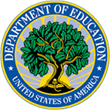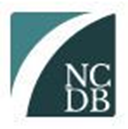
 |
OSEP Update
A Newsletter for OSEP Grantees and Interested Stakeholders
October 2021
Forwarded this email? Click here to subscribe.

In This Issue:
- From the Director
- ED Updates
- Announcements
- Recommended Resource
- Featured Resources
- Connect with Us Online

From the Director

Message from Acting OSEP Director, Dr. David CantrellDear Stakeholders, As we begin Fiscal Year 2022, I want to take a moment to thank you for all that you do to support infants, toddlers, children and youth with disabilities and their families. I’m excited to announce that on Thursday, September 30, 2021, the Office of Special Education and Rehabilitative Services (OSERS) released our most recent guidance document “Return to School Roadmap: Development and Implementation of Individualized Education Programs in the Least Restrictive Environment under the Individuals with Disabilities Education Act.” This guidance includes information about ensuring individualized education programs (IEPs) are in effect at the beginning of the school year; convening the IEP Team; consideration of special factors, including each child’s need for assistive technology devices and services, and addressing the social, behavioral, emotional, and mental health needs of children with disabilities; determining appropriate measurable annual goals and considering the child’s need for compensatory services; making Extended School Year Services (ESY) determinations; addressing a child’s secondary transition service needs; making educational placement decisions; and, resolving disagreements regarding the child’s educational program. In addition, October is Learning Disabilities/Dyslexia/Attention Deficit Hyperactivity Disorder (ADHD) Awareness, Blindness awareness, National Down Syndrome Awareness, and National Disability Employment Awareness month. We want to highlight the work of our Office of Special Education (OSEP) funded centers that support learning and accessibility needs for students disabilities. They include Bookshare, The NIMAC, The National AEM Center, The National Center on Improving Literacy, The National Deaf-Blind Center, and The TIES Center to name a few. You learn more about all OSEP funded centers by clicking here. For many students with dyslexia, accessible books level the playing field, allowing them to achieve their potential in school and become lifelong readers. That is certainly the case for Minnesota Honors student, Ella Johnson. A dyslexia diagnosis opened a whole new world of learning for Ella through text-to-speech audio. “Reading with your ears or any sort of accommodation is still reading and it counts,” explains Ella. “Any way you can access a book is worthwhile. I love to read! Once you find the tools that work for you, it’s so much easier.” Read Ella’s story. In addition, The National Center on Improving Literacy (NCIL) has developed a variety of resources for those affected by dyslexia, including an Understanding Dyslexia toolkit and advice from experts on dyslexia. The resources can be found on the website https://improvingliteracy.org/topic/dyslexia. Please take some time this month to check out some of their work! As we continue to navigate these unusual times, remember the words of Eileen Kennedy-Moore, “By loving children for more than their abilities, we show them that they are much more than the sum of their accomplishments.” Thank you again for all that you do! David Cantrell, Ph.D.
|

ED Updates

Office of Elementary and Secondary EducationNavigating the Psychological Effects of COVID-19 in the ClassroomOn Tuesday, September 23rd at 1:00pm MT/3:00pm ET, the Western Educational Equity Assistance Center (WEEAC; EAC Region IV) will present a webinar for teachers as they help their students begin a new school year. The webinar will address how educators and students have been impacted by COVID-19, ways to assist children socially and emotionally with adjusting to being back in school, developmentally appropriate language to use with students when talking about health and safety, and behavioral approaches to reinforcing public health and CDC guidelines. Click here for learn more about all OSEP funded centers. |
Expanding Supports for Student Health and Mental Health: Featuring Lessons Learned from Nebraska and the Puget Sound Educational Service District
On Tuesday, October 5th from 2:00pm to 3:00pm ET the Student Engagement and Attendance Center (SEAC) will host a webinar on strategies for supporting students’ health, including mental health, during and following the COVID-19 pandemic. Representatives from Nebraska and Washington will describe their unique approaches to supporting student health, illustrate their lessons learned during the past year, and outline their plans for applying these lessons to the 2021-2022 school year and beyond. To register for this webinar, click here.

Announcements
Technical Assistance (TA) Calls
Next TA Call: October 14, 2021 at 4:00–5:00pm (EDT)
The first October National TA call will focus on the Office of Special Education Programs (OSEP) staff will discuss the FFY 2020 State Performance Plan (SPP) / Annual Performance Report (APR), including:
- Provide an overview of the changes within the FFY 2020 SPP/APR package;
- Provide a synopsis of the FFY 2020 SPP/APR reporting template;
- Provide updates on the SPP/APR reporting platform; and offer general SPP/APR related reminders.
Upcoming TA Call: October 28, 2021 at 4:00–5:00pm (EDT)
The second September National TA call will focus on DMS 2.0 activities. As part of the Universal TA, the DMS National TA calls will provide guidance on specific puzzle pieces in coordination with our Phase I monitoring activities, or other guidance related to DMS 2.0.
Previous TA Calls: September 9, 2021 at 4:00–5:15pm (EDT)
The first September National TA call focused on the IDEA SPP/APR indicators for Family Engagement (Part C) and Parent Involvement (Part B).
(All National TA calls are recorded and typically posted within a week)
State Performance Plans / Annual Performance Reports (APRs)
Updated information regarding the next SPP/APR submission due on February 1, 2022, will be presented on the October 14th OSEP National Monthly Technical Assistance call.
IDEA Part B/C Grants
Reviews are being conducted of States’ Part C Section III/ARP documents in collaboration with the Fiscal Implementation Team. These documents specify how Part C programs are planning to use their ARP funds. Information and follow-up activities from these analyses will be provided soon.
Differentiated Monitoring and Support (DMS)
OSEP plans to continue conducting DMS Technical Assistance (TA) Calls on the fourth Thursday of each month at 4:00 p.m. ET.
To access resources related to monitoring activities (e.g., DMS 2.0, DMS Reports, and older monitoring reports, etc.), please refer to the DMS section on our IDEA website.

Recommended Resource

State and Jurisdictional Eligibility Definitions for Infants and Toddlers with Disabilities Under IDEA Part CThis resource features a database that provides information about a state’s or jurisdiction's IDEA Part C eligibility policy. Also included is a summary of national variations in eligibility policies for infants and toddlers from birth to age 3 enrolling in early intervention programs under Part C. Staff from the Early Childhood Technical Assistance Center and the Center for IDEA Early Childhood Data Systems reviewed online documentation of eligibility policies for states, territories, and the Department of Defense that receive Part C funding. |

Featured Resources

New resource from the TIES CenterHow can education teams make IEPs that are relevant for implementation in general education classrooms? Check out this new resource from the TIES Center that guides teams through an IEP planning process based on the expectation that each student, including students with significant cognitive disabilities, can actively participate, belong, contribute, and learn in the school and larger community. |

New Practice Guide:
|

More Classroom Behavior Management Resources from the IRIS CenterThe IRIS Center’s newest module, Classroom Behavior Management (Part 2, Secondary): Developing a Behavior Management Plan, was designed specifically with middle and high school teachers in mind. This newly revised IRIS Module reviews the major components of a classroom behavior management plan (including rules, procedures, and consequences). As learners work through the module, the interactive IRIS Behavior Plan Tool guides them through the steps of creating their own classroom behavior management plan. The module is a companion to Classroom Behavior Management (Part 1): Key Concepts and Foundational Practices, which provides the groundwork for setting up a classroom behavior management plan. New “Returning to School” boxes address unique issues related to the return to in-person learning (e.g., the effects of grief, trauma, and anxiety on student behavior) and tips and supports for teachers. A new IRIS Fundamental Skill Sheet, Virtual Instruction: Behavior-Specific Praise, provides tips and implementation examples for teachers working in virtual classroom environments. Developed in collaboration with Ci3T, this resource mirrors the content from Behavior-Specific Praise, one of IRIS’ most popular fundamental skills sheets for in-person classroom environments. |
![]()

New Stories from the Classroom Videos from the PROGRESS CenterIn the most recent Stories from the Classroom video from the PROGRESS Center, Billy Pickens explains how his teacher’s high expectations were not always welcome while he was in high school, but as an adult who is deaf-blind he now appreciates how important it was for his future. Other recent videos highlight finding the right assistive technology, and continuing to promote progress and pivot during the uncertainty of COVID-19. View all videos in the Stories from the Classroom Series and check back often to see new videos. |
New Resource from the AEM CenterAccessible Educational Materials in the IEP provides helpful advice to IEP teams about ways that students’ needs for and access to accessible educational materials (AEM) can be included in the IEP. |
REL Report: Supports Associated with Teacher RetentionThe Michigan Department of Education wants to improve the retention of effective teachers. This study from REL Midwest informs that effort by identifying teacher supports currently in place in traditional school districts and charter schools (called public school academies in Michigan) that are associated with teacher retention. |
 |
What Works Clearinghouse Webinar on Evidence-Based Math, Reading, and Writing Tip












